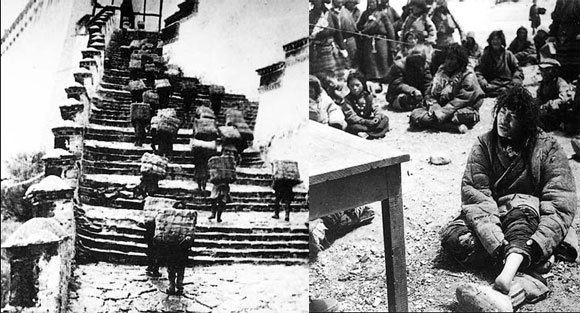
Left: Serfs carry goods to the Potala Palace. Right: A herdsman's left foot was chopped by the head of his tribe. File photo
Among the documents at the Archives of the Nationalities Cultural Palace in Beijing are some that hint that a feudal-serfdom institution existed in Tibet before the democratic reform in 1959, which was more brutal than the system of medieval Europe.
According to the Thirteen and Sixteen laws - the Tibetan feudal legal codes that were compiled in the 17th and 18th centuries and were applied until 1959 - Tibetans were divided into three social strata within nine grades:
In the upper stratum, the King of Tsang and other rulers belonged to the upper grade; Geshes, teachers of morals, abbots, high-ranking officials, or "headmen who had more than 300 attendants and servants", the middle grade; while "the independent bachelors, servants doing odd-jobs in government offices" were relegated to the upper grade of the lower stratum; "blacksmiths, butchers and beggars who had permanent residence and paid taxes", to the middle grade of the lower stratum; and "women, beggars, butchers and blacksmiths" to the lower grade of the lower stratum "whose life-price was a straw rope".
Documents kept at the Archive of the Tibet Autonomous Region show the monasteries, officials and aristocrats owned, governed and inherited all the arable land and pastures.
The social strata were strictly followed.